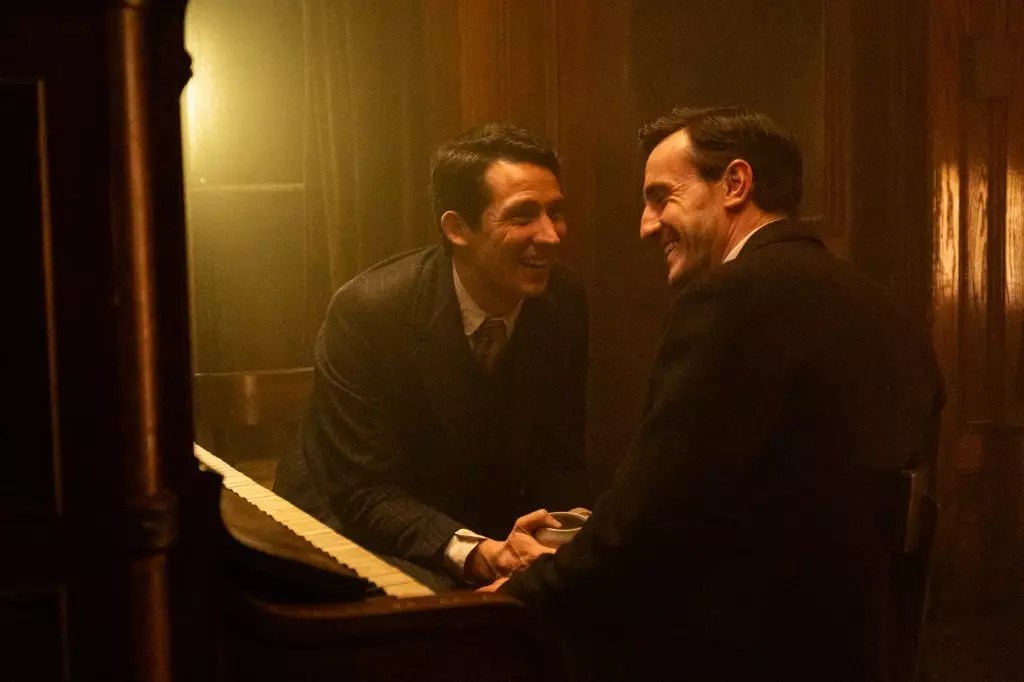In the current cinematic ecosystem, independent films face an increasingly challenging environment, especially as the awards season approaches. The usual momentum they rely upon diminishes, making each release a testament to resilience and strategic finesse. The recent debut of Oliver Hermanus’s *The History of Sound* exemplifies this nuanced battle. Premiering at Cannes and expanding steadily into theaters, the film has achieved modest commercial success, grossing around $439,000 to date with a strong critical reception of 83% on Rotten Tomatoes. Its story—a poignant exploration of music and memory—resonates deeply with cinephiles, yet the film’s modest box office indicates the uphill climb indie projects confront amid larger studio releases dominating the landscape.
What is truly compelling about *The History of Sound* is its narrative depth. Through the rekindling of a youthful love affair and a journey through Maine’s folk traditions, it underscores the timeless relevance of authentic storytelling. This is a testament to how indie films can carve out unique spaces by prioritizing narrative substance over spectacle. However, even with critical acclaim and festival prestige, these films often struggle for visibility in a crowded marketplace—an issue compounded by the industry’s pivot toward mainstream blockbusters and franchise fatigue. It’s a reminder that indie filmmaking must foster not just artistic quality but also innovative marketing strategies to sustain relevance.
The Power of Niche and Special Engagements
While broad theatrical release remains a daunting mountain for small-scale films, the industry has shifted toward leveraging special events and selective screenings to cultivate audiences. For instance, *Sight & Sound Presents: NOAH! – Live* achieved an impressive opening, grossing over $1.3 million from a relatively modest 933 screens. This highlights the potential of live performances and anniversary celebrations to reignite interest—capitalizing on nostalgia and cultural significance in ways traditional releases cannot.
Similarly, limited openings like *Predators*, exploring the darker corners of reality TV’s influence, symbolize how niche films can garner critical and audience attention in art-specific venues like New York’s Film Forum. These screenings often report sell-outs, demonstrating that there is a dedicated audience hungry for unconventional, thought-provoking content. This underscores the importance of theatrical exclusivity and curated programming in sustaining the arts in a landscape increasingly dominated by digital streaming.
Institutional Support and the Future of Independent Cinema
With established distributors such as Oscilloscope Laboratories and Focus Features investing in debut features and niche projects, it is evident that the industry recognizes the enduring value of distinctive voices. Films like *Peacock*—a sharp Austrian satire—demonstrate how international awards and critical acclaim can elevate indie cinema beyond box office figures into the global consciousness. Their premieres at prestigious festivals foster momentum that can translate into wider engagement, especially when combined with targeted regional expansions.
Meanwhile, traditional holdovers like *Downton Abbey: The Grand Finale* continue to draw audiences and demonstrate the staying power of established franchises. Yet, it is the delicate balance between high-profile blockbusters and intimate indie storytelling that will dictate cinema’s future. The survival of independent films hinges on their ability to adapt, leverage niche markets, and forge meaningful connections with audiences who seek authenticity—qualities that mainstream fare often neglect.
This evolving landscape might feel saturated, but it also presents opportunity. For indie filmmakers and distributors, the challenge is to craft compelling stories that transcend mere entertainment—stories that resonate on a human level and foster community. As the industry navigates changing consumer habits, embracing innovative engagement strategies becomes not just advantageous but essential. In this climate, the resilience of indie cinema will be measured by its capacity to adapt, inspire, and ultimately endure amidst the premier force of mainstream dominance.
